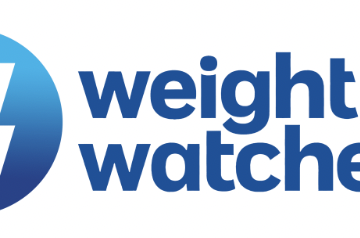Understanding food labels is essential for making informed choices about the products we choose to consume. In the United Kingdom, food labels provide valuable information about the nutritional content and ingredients of packaged foods.
This blog aims to help you navigate UK food labels by highlighting some of the key aspects to look out for and providing easy-to-understand explanations.
- Ingredients List: The ingredients list provides information about what is included in the product. Ingredients are listed in descending order by weight, meaning the first ingredient listed is present in the highest quantity. Be aware of potential allergens, as they are usually highlighted in bold or specified separately.
- Nutrition Information: The nutrition information panel must display the amounts of energy (calories), fat, of which saturates, carbohydrates, of which sugars, protein and salt per serving or 100 grams/ml of the product. Pay attention to serving sizes to accurately assess nutritional values. Labels may also see extra information (not required), such as the fibre, starch, mono and poly unsaturated fats, polyols (sweeteners) and any vitamins/minerals.
- Traffic Light Labels: Some food products in the UK feature a traffic light label system. This colour-coded system uses red, amber, and green symbols to indicate the levels of fat, saturated fat, sugars, and salt in the product, and compares it to reference intakes (RI). RI are a guidance on the average daily amount of nutrients needed for a adults diet, based on 2000 calories per day.
Red signifies high levels, amber denotes moderate levels, and green indicates low levels. Use these labels to quickly assess the nutritional value of a product.
Nutrition label terms explained:
| Label | Explanation |
| Energy | The energy that foods and drinks contain is measured by calories. You will see that labels show energy by kilojoules (kJ) and kilocalories (kcal). Kcals are the well-known term ‘calorie’, and the kJ is the metric measurement of calories (calories multiplied by 4.2)
|
| Carbohydrates | Includes the starches found in foods such as bread, rice, potato and pasta, as well as sugars. These sugars include table sugar, sugars found in foods such as honey, fruits juices and naturally occurring from fruits and dairy.
|
| Of which sugars | This specifies how much of the carbohydrate content is from sugars, rather than just starches. These are total sugars and does not distinguish between natural sugars found in some foods such as fruit and plain yoghurt, compared to ‘free sugars’, that are sugars from honey, syrups and fruit juices. Ideally, we want to reduce the level of free sugars in our diet.
|
| Fat | Including different kinds of fats; saturated and unsaturated fats. In our intake of overall fats, we want to have the majority coming from unsaturated fat sources, less coming from saturated fat sources.
|
| Of which saturates | If you look at the label at the saturated fat content, you can work out how much fat in the product is unsaturated. High intakes of saturated fats can increase levels of cholesterol in the body, leading to further health complications.
|
| Protein | Total protein in the product. Protein is important for growth and repair of the tissues in the body.
|
| Salt | Includes all the salt in the food, that which is naturally present, as well as what may be added. Salt can also come from additives and raising agents.
|
Other information on food labels that may be of interest:
- “Free-From” Claims: “Free-from” claims on food labels highlight the absence of specific ingredients, such as gluten, dairy, or nuts. These claims can be helpful for individuals with dietary restrictions or allergies. However, it’s important to read the ingredients list and allergen information to ensure compliance with your specific needs.
- Allergen Information: Food labels in the UK are required to highlight 14 common allergens, including cereals containing gluten, crustaceans, eggs, fish, peanuts, soybeans, milk, nuts, celery, mustard, sesame seeds, lupin, molluscs and sulphites. These allergens must be clearly highlighted in the ingredients list or provided in a separate “contains” statement.
- Sustainable and Ethical Labels: Some food products may display labels indicating sustainable and ethical practices, such as Fairtrade, organic, or MSC (Marine Stewardship Council) certification. These labels signify compliance with certain standards and can help you make choices aligned with your values.
- Additives and E-Numbers: Food labels list any additives used in the product, identified by their specific names or E-numbers. You can refer to online resources or the Food Standards Agency (FSA) website for more information on specific additives and their safety.
- Organic Certification: If a product is labelled as “organic,” it means it has been produced using organic farming methods that prioritise environmental sustainability and animal welfare. Look for recognised organic certification logos, such as the Soil Association logo, to ensure the product meets organic standards.
- Serving Suggestions and Cooking Instructions: Food labels may provide serving suggestions and cooking instructions to help you make the most of the product. These suggestions can include recommended portion sizes, preparation tips, and recipe ideas.
- High and Low Claims: Food labels may make claims such as “high in fibre” or “low in saturated fat.” These claims must meet specific criteria set by regulatory bodies. However, it’s important to consider the overall nutritional profile of the product and not solely rely on individual claims.
- Nutritional Claims: Some labels may include nutritional claims such as “source of vitamin C” or “high in iron.” These claims highlight specific nutrients present in the product. Ensure these claims align with your dietary goals and requirements.
Remember, interpreting food labels is a valuable skill, but it’s also important to consider the overall quality and variety of your diet. Prioritise whole, minimally processed foods, and aim for a balanced and diverse diet to support your health and well-being.
By using this guide to understand food labels in the UK, you can make more informed choices about the products you purchase, aligning them with your dietary goals and preferences.
If you want to learn more about how to read food labels, reach out to a dietitian in your area today.
Written by Nadia, dietetic student intern.
Reviewed by Reema Patel, Registered Dietitian







